LED lighting sources have entered the popularization stage. However, the blue light hazard generated by LED lighting sources has not received the attention of users. Many people do not even understand the importance of blue light hazards. If the implementation of relevant technical standards is not strengthened, Blu-ray hazards will To become a social issue in the future, we need to be vigilant and valued.
People's visual impairment is the most unacceptable injury. Especially after the elderly, vision problems are very troublesome to life. The macular degeneration caused by blue light hazard has become the most important issue for LED lighting. According to the World Health Organization report, the macula The blindness caused by the lesions ranks first, and the cataract is the most important factor causing poor vision. In today's large-scale use of LED lighting, the blue light hazard of LED lighting makes it worthy of attention.
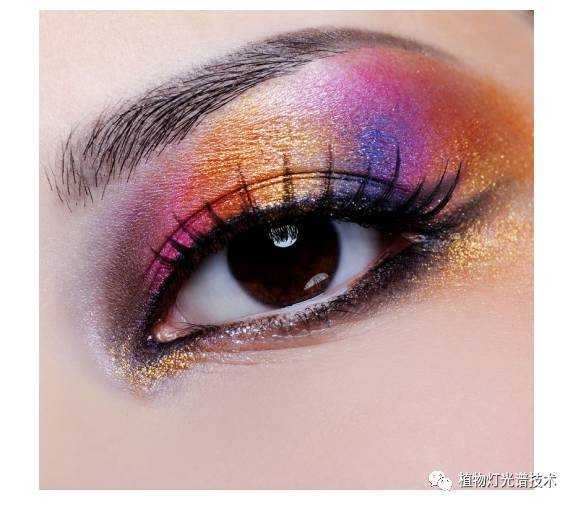
In today's promotion of energy saving and environmental protection, LED lighting sources have achieved unprecedented development, but the human eye health caused by LED lighting has not been warned in this industry. A large number of high color temperature products and low-priced inferior products are full of the market. The main reason is The manufacturers and users of LED light sources do not understand the blue light hazard caused by LED lighting. When they endanger their own eyes, that is the saddest thing.
This article comprehensively and systematically introduces the professional article of blue light hazard mechanism, hoping to play the knowledge of popularizing blue light hazard, so that readers can pay attention to the problem of blue light hazard. After all, the cost of macular lesion examination and treatment is very, very expensive.
The mechanism of the blue light hazard is described in detail below.
1. The main components contained in white light
Sunlight is the white light we usually see. Through the prism's decomposition of sunlight, we can see that the sunlight is formed by a mixture of various monochromatic lights. As shown in the following figure, the main component of sunlight is red and green. Light and blue light.
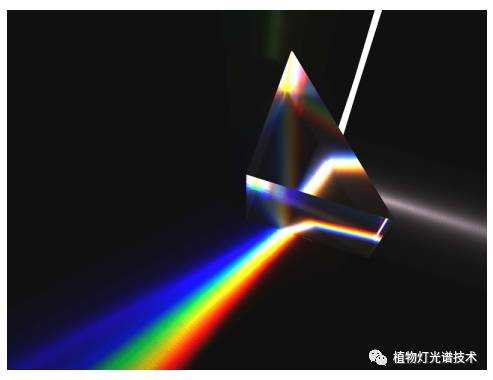
Projecting red, green, and blue light together, or mixing them into white light. As shown in the following figure, the artificial illumination source is based on this principle to synthesize white light. In fact, in addition to red, green, and blue light, white light Monochromatic light containing other components is required so that the mixed white light provides a true color reproduction of the object being illuminated, which we call the color rendering performance of white light.
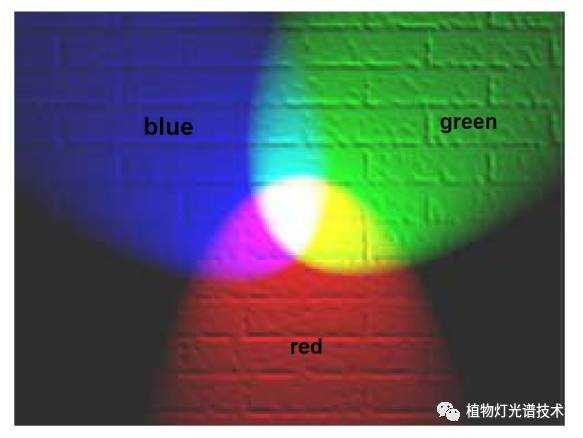
2, white light color temperature and blue light relationship
The indicator for measuring white light color is color temperature, the unit is K (Kelvin). Generally, the color temperature range of LED illumination white light is: 2700K-7000K, the blue light component in white light is increased, the color temperature of white light is increased, and the blue light component in white light is added. Decreasing and increasing the red light component, the color temperature of white light is reduced, and the relationship between the color temperature of the artificial light source and other light sources is as follows:
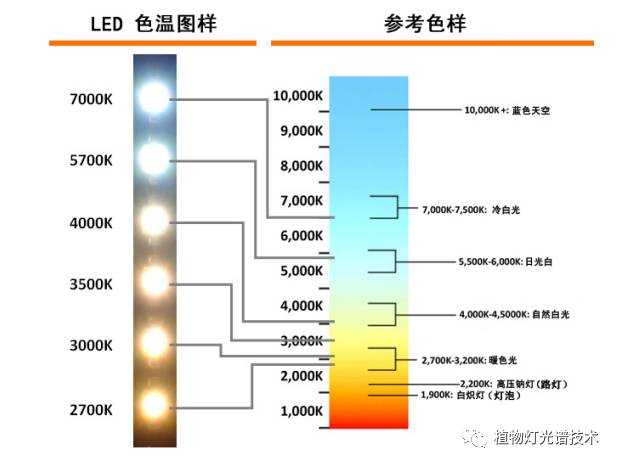
3, LED white light spectrum
Spectral analysis is used for the composition analysis of white light. The spectral analysis of white light is a two-dimensional diagram that combines the components of various monochromatic light of white light with the radiation power corresponding to the wavelength. The following figure shows the LED white light of different color temperatures. The spectrogram can be visually seen from the figure. The higher the color temperature, the larger the blue light ratio.
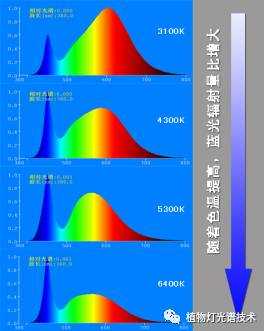
4. Photon energy distribution of visible light
We call the light that the human eye can see as visible light. The wavelength of visible light is 400-750nm. In the visible range, the color of light of different wavelengths is different. The light we see is actually the visual cell of the human eye. The photons that are sensed, the photons of different wavelengths are different in the color of the visual cells. More specifically, the photon energy is different. The distribution of wavelength and photon energy is shown in the figure below. As can be seen from the figure, in visible light In the range, blue light (wavelength 400-500nm) photons carry the most energy, called high-energy light, ultraviolet photons have higher energy than blue light, human eye's visual cells do not sense ultraviolet light, ultraviolet light is also called invisible light, and fluorescent light Differently, the LED illumination source does not produce ultraviolet light.
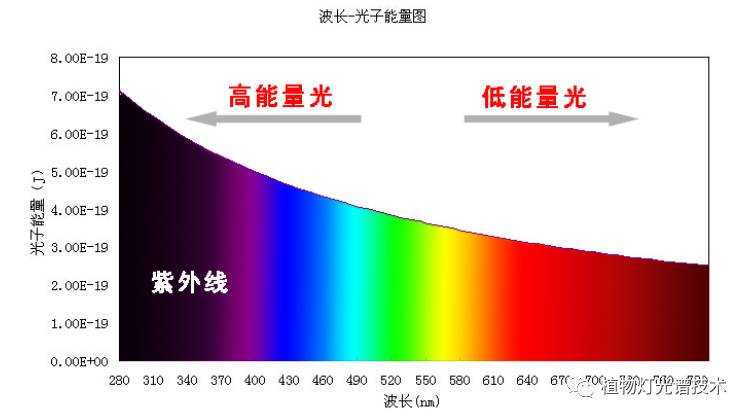
5, human eye structure and retinal macular fovea
How does blue light harm the health of the human eye? First, we need to understand the structure of the human eye and the visual function of the human eye. The structure of the human eye is shown in the figure below.
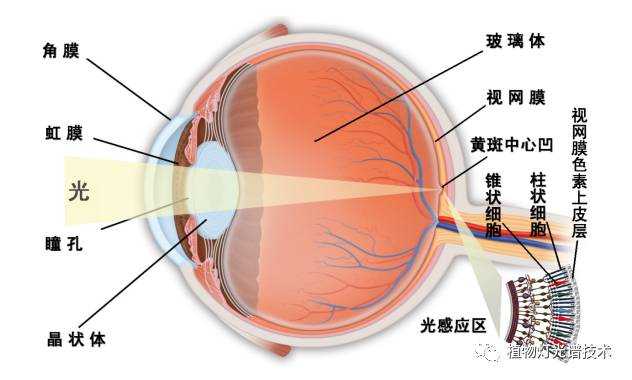
The object that the human eye can see is actually the reflected light of the object. The path of the light entering the human eye is: the light along the visual axis, through the cornea, pupil, lens, vitreous to the retina, the visual axis end of the retina There is a shallow funnel-shaped small depression area called the fovea fovea. The fovea is the most sensitive place of vision. It is rich in visual cells. The objects seen by the eyes are projected in the fovea of ​​the macula. The macula is rich in this area. Named lutein.
Lutein, also known as "plant lutein", is a natural substance widely found in vegetables, flowers, fruits and other plants. It belongs to the "carrot-like" group of substances. It is known that there are more than 600 kinds of carotenoids in nature. Of these, only about 20 are found in human blood and tissues. Lutein is the main component of plant pigments such as corn, vegetables, fruits, flowers, etc. It is contained in the chloroplast of leaves and can transmit absorbed light energy to chlorophyll a, which has protective effect on photooxidation and light destruction. Lutein is also the main pigment that constitutes the macular area of ​​the human eye.
6, visual cells
How does the human eye see objects? The inverted image of the object seen by the human eye is projected on the macular area of ​​the retina, which is a transparent membrane. There is a visual cell behind the retina. The function of the visual cell is to sense the photon entering the human eye and the yellow spot at the end of the visual axis. The fovea is rich in visual cells and is the area of ​​visual sensing. The picture below shows the visual cell organization.

In the figure, the yellow-green strip cells are called columnar cells. The blue cone-shaped cells in the figure are called cone cells. These two cells constitute the visual cells of the human eye. The cone cells are mainly distributed in the fovea of ​​the macula. The object seen by the eye is realized by the induction of light by the two cells. The columnar cells and the cone cells transmit the sensed light signal to the nerve cells for mixing, and then the nerve fibers are transmitted to the brain to form a visual image.
The human eye has about 120 million columnar cells and 8 million cone cells. Visual cells are not regenerative after death, so the visual cells of the human eye are the most precious and non-renewable resources of the human body. Visual cells gradually decrease as people age, which is why the visual acuity of the elderly is gradually declining.
When the columnar cells are damaged, they will get night blindness. When the cone cells are damaged, they will get color blindness.
Columnar cells only sense dark vision in low-light environments (luminance values ​​are less than 0.001CD per square meter). Columnar cells can only sense the light and darkness of light, and can't sense the color of light. That's why when we are very dark at night, The human eye can only see objects black and gray, but can't see the color, as shown below:
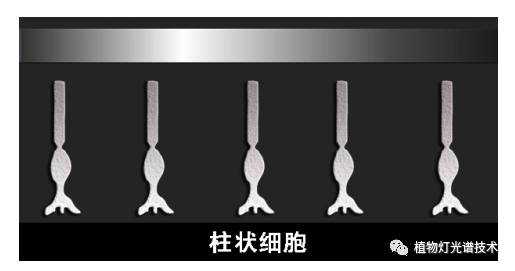
Cone cells are bright visions produced under normal illumination (brightness values ​​greater than 3CD per square meter), cones sense the color of light, and in bright environments, mainly cones provide visual function, which is our The color world can be seen in a bright environment, and cone cells are the most common visual cells of humans.
The cone cells are further divided into three types, which are cone-shaped cells that induce red light, cone-shaped cells that induce green light, and cone-shaped cells that induce blue light, as shown in the following figure:
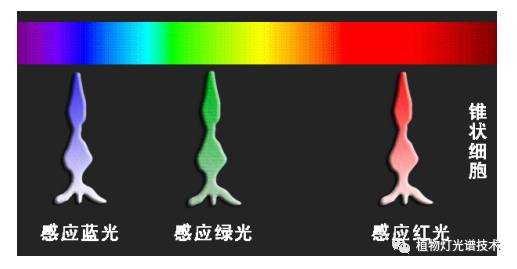
Cone cells that induce red light are most sensitive to wavelengths from 650 to 680 nm;
The cone-shaped cells that sense green light are most sensitive to wavelengths from 560 to 570 nm;
The cone-shaped cells that induce blue light are most sensitive to wavelengths of 440-450 nm;
It is close to the wavelength of the white LED chip, which is also the cause of the blue light hazard of the LED illumination source.
The ratio of the three cone-shaped cells is about 40:20:1, and the number of cone-shaped cells that induce blue light is the least and most precious. The process by which cones form a vision is: three cone-shaped cells sense the intensity of red, green, and blue light contained in the light of the human eye, forming a color signal, producing a color image in the brain, because the cone is brighter. The environment works, also known as Ming Vision.
7. Nutrition and metabolism of visual cells
From the human eye structure diagram, we see that the columnar cells and the cone cells are connected to the retinal pigment epithelial layer. The retinal pigment epithelial layer is responsible for providing nutrients to the columnar cells and the cone cells. The retinal pigment epithelial layer can engulf and digest the columnar cells and cones. Metabolites of squamous cells.
When the light reaches the fovea of ​​the retina, the lutein contained in the macula will absorb an appropriate amount of blue light. The injection of light will generate free radicals. The free radical is an oxygen with strong oxidizing ability. Under normal conditions, free radicals will be The body's antioxidant substances GSH-P and SOD are absorbed and metabolized by the blood, so that the retinal pigment epithelial layer can normally supply nutrients to the columnar cells and the cone cells.
8, retinal macular degeneration
The macular of the normal person's eyes will age with age, and the aging yellow spot will cause the vision to gradually decrease. Seeing the object is blurred, more illumination is needed to distinguish the details. This is a normal physiological phenomenon.
If you work and live in a lighting environment with a lot of blue light components for a long time, excessive high-energy blue light will enter the human eye, and a large amount of free radicals will be generated. The antioxidant substances in the body cannot completely eliminate excessive free radicals. Excessive free radicals will Accelerate the oxidation of the macula in the retina, and the blue light that is not absorbed by the macula directly damages the visual cells. Excessive free radicals can also oxidize and damage the retinal pigment epithelial cells, making the retinal pigment epithelial cells unable to provide nutrients and metabolism to the visual cells, resulting in poor supply of visual cells, ultimately leading to the death of major visual cells in the macula. The death of visual cells is Nonrenewable.
Since the macular area is mainly a cone-shaped cell, high-energy blue light has a detrimental effect on the pigment, which is the main factor leading to the death of the macula in the macula, which is the macular area lesion (AMD), which causes macular lesions caused by blue light damage. The vision is rapidly weakened, the object is deformed, the lines of the object are curved, and there is a black shadow or blurred area in the center of the vision. If there is a bloody macular lesion, it will be permanently blind.
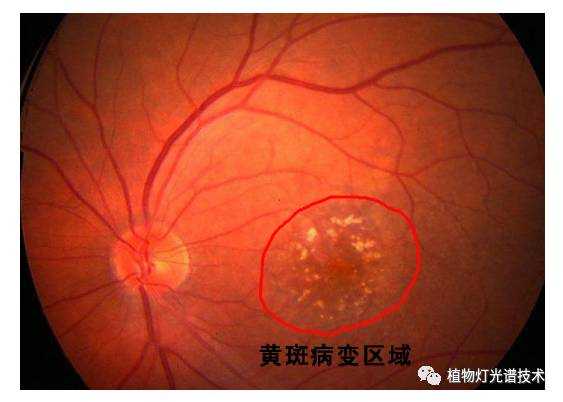
The degree of damage to the retina by white light depends on the blue light content and the intensity of light and the length of time that blue light stays in the retina.
In addition, the blue light hazard is also related to the physical fitness of the individual, not everyone is the same.
Because children's retinal macula has weak absorption of blue light, the amount of blue radiation received by children's retina is about twice that of adults. Therefore, blue radiation has the greatest impact on children's visual health and is the most in need of protection.
9. Blue light hazards and countermeasures caused by LED lighting
Regardless of the white light of the sunlight and the artificial light source, when the blue light component in the white light reaches a certain intensity, the blue light component in the white light will affect the human visual health. Since the LED white light is mixed by the blue light emitting chip and the yellow fluorescent powder, The blue light hazard problem of LED is particularly prominent. When the white color temperature of LED white light reaches 7000K or more, the blue light hazard of LED is the most prominent among all artificial light sources. The blue light hazard of LED illumination light source is a public health problem. If it is not controlled, it will not be caused. Restoration of social problems caused by visual impairment.
Blu-ray hazards not only exist in LED lighting sources, energy-saving lamps, fluorescent lamps, mobile phones, displays, televisions, and sunlight can cause cone-shaped damage.
Screen Guard,Ultra-Thin Screen Protector,Full Coverage Screen Protector,TPU Hydrogel Screen Protector,TPU Film,Screen Protection Film
Shenzhen Jianjiantong Technology Co., Ltd. , https://www.jjtbackskin.com